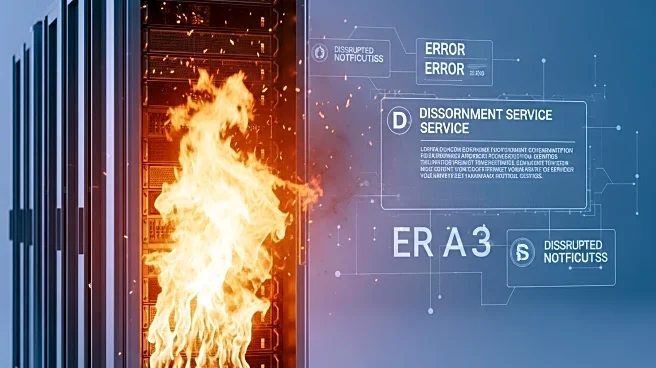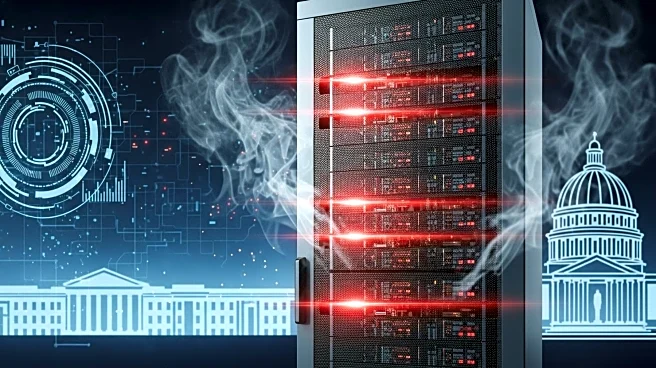What's Happening?
A fire at the National Information Resources Service data center in Daejeon, South Korea, caused by a lithium battery explosion during maintenance work, led to a nationwide outage of hundreds of government services. The incident occurred on Friday evening, and the fire was extinguished by Saturday. The outage affected ministry websites, postal services, mobile identification cards, and government email services. The fire initially disrupted about 70 government systems, but to prevent overheating, all 647 systems at the data center were shut down during the firefighting operation.
Why It's Important?
The disruption of government services due to the fire highlights the vulnerability of critical infrastructure to technical failures and accidents. The outage impacts citizens' ability to access essential services, such as obtaining official documents and using mobile identification cards, which are crucial for daily activities. The incident underscores the importance of robust disaster recovery and emergency response plans to ensure continuity of services in the face of unforeseen events. It also raises concerns about the reliance on technology and the need for secure and resilient systems to prevent similar occurrences in the future.
What's Next?
Efforts are underway to restore the affected systems and services, with officials working over the weekend to bring them back online. The government may need to review and enhance its safety protocols and infrastructure resilience to prevent future incidents. Stakeholders, including government agencies and technology providers, are likely to assess the situation to improve maintenance practices and emergency response strategies. The incident may prompt discussions on the need for alternative solutions to ensure uninterrupted access to government services.
Beyond the Headlines
The fire at the data center may lead to broader discussions on the ethical and legal responsibilities of maintaining critical infrastructure. It could trigger a reevaluation of the balance between technological advancement and safety measures. The incident might also influence cultural perceptions of technology dependence and the importance of preparedness for technological failures.












